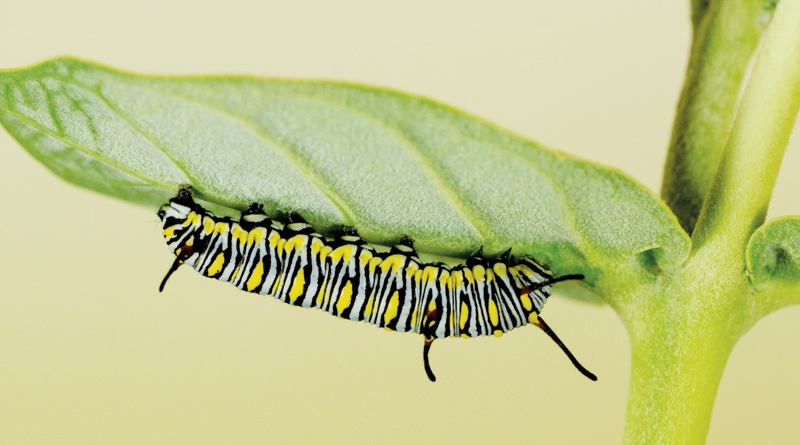MILKWEED, MONARCHS & MORE! – Green-Thumb Gardener

There is a great deal of interest in the support for monarch butterflies in the past few years! The decline of milkweed growing wild with the increased use of herbicides over the years is one of the factors in their population decline as well. The more we can plant as part of our landscaping the chances for their improvement in numbers is greater, of course.
Milkweed nectar is enjoyed by many insects, of course, but the plant itself is host to monarchs as well as some other insects. The three best known for our area are: common milkweed (Asclepias syriaca), swamp milkweek (Asclepias incarnate), and butterfly weed (Asclepias tuberosa). Common milkweed requires lots of sun and consistent moisture. It grows 3 to 5 feet tall and flowers from June to August. It is not recommended for landscape plantings as it has a tendency to take over the space. Swamp milkweed, as the name implies, thrives with consistent moisture and will tolerate some shade. It grows 2 to 5 feet tall and flowers from June to October. Butterfly weed has the bright orange flowers and needs lots of sun but much drier soils. It grows 1 to 2 feet tall and flowers from May to September. Whorled milkweed is not uncommon in our area and I have seen it in the wild and in a number of highway medians and right of ways, but not common in the landscape trade. It has small greenish-white flowers and prefers drier soils. It will tolerate a bit of shade, grows 1 to 3 feet tall, and blooms from May to September.
Monarchs are not the only animals that use milkweed, however, as a host. The milkweed bug eats the plant parts and especially likes the seeds. The milkweed beetle uses it for food. The milkweed tiger moth has a larva that eats the leaves as well. None of these animals are harming the larva or eggs of the monarch, so grow some extra plants so there is enough for all. Each of these animals have an important role in nature. One that you won’t want to see is the oleander aphid, a bright yellow aphid that sucks out the juices of the plant. It will harm the plant in large numbers so watch for it and remember to cut these parts off and dispose of or simply squash them. Spraying insecticides will harm the beneficial insects as well and is not recommended. Enjoy observing the interactions of these wonderful flora and fauna!
This article is sponsored by McNamara at Sand Point, which has 2 acres of production greenhouses, retail florist and gift shop, as well as retail garden center and wholesale plant business. Contact McNamara by calling 260-747-4131 or visit 4322 DeForest Ave, Ft. Wayne, IN 46809.
- Celebrating 20 Years Of Community At The Stand - April 12, 2024
- First Positive Case Of Chronic Wasting Disease In Indiana - April 12, 2024
- Southwest Allen County Schools Embark On Major Tree Plantings - April 12, 2024


